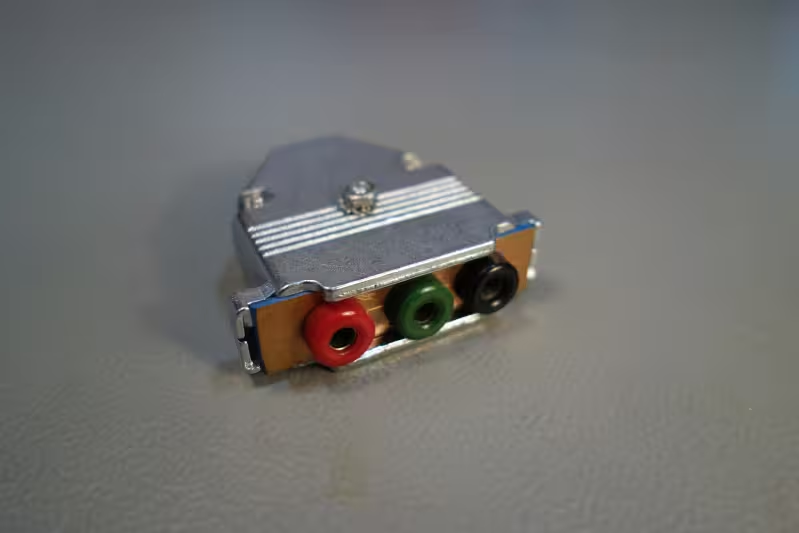Rail splitter
Project | Article by Maarten Tromp | Published | 318 words.
Introduction
Sometimes you really need a symmetric power supply, but you only have a single ended one available. Don't you hate that? This is where the rail splitter comes in.
 Built rail splitter in subd-25 enclosure
Built rail splitter in subd-25 enclosure
In this article:
A rail splitter is a device that makes a virtual ground at half the input voltage. In other words, when you put single ended 30V in, you get a symmetrical +/- 15V out. This is exactly what you would otherwise need a symmetric power supply for. It even has a feature a symmetric power supply won't offer you. On a regular power supply, when you go into current limiting on one output, the voltage on that one output starts dropping, but the voltage on the other output is not affected at all. So your ground potential is no longer exactly in the middle between the two voltages. This might cause problems with the electronics hooked up to the power supply. For instance, not all audio amplifiers are designed to be able to handle asymmetric rails. Worst case it could apply DC to your speaker outputs and produce some magic smoke. This problem is completely solved with the rail splitter. The virtual ground stays, by design, exactly at half the input voltage, even when that input voltage is fluctuating.
How do you make a rail splitter, you ask? Just make a voltage divider and buffer it with a powerful opamp. I used the L165 power opamp which can deliver up to 3 A of output current. In the datasheet is a schematic for this specific virtual ground application on page 6. It is also published in Elektors 304 Schakelingen (Dutch, ISBN 90-5381-001-3) on page 324.
The reason I built this in a subd25 housing is that it was the smallest enclosure I had around that I could just squeeze everything in. Also the metal shell acts as heatsink.
Relevant data sheets can be found in the downloads directory of this article.